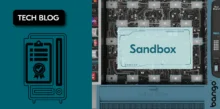The revolution you’re missing: mobile payments and emerging markets
by Sukey Miller

We mobile payment watchers love to get hot under the collar over the latest VC backed payment technology or oddly-named initiatives from banking giants. We picture well-dressed early adopters waving their phone to pay for coffee in a Manhattan Starbucks, and flatter ourselves that we’re at the bleeding edge of payment technology.
We rarely consider the truth, which is that much of the innovation around mobile banking and payments is occurring in the developing world. By leaping straight to a pervasive wireless infrastructure, and widening access to mid-level, connected feature phones, many in the developing world are enjoying access to mobile services that we in the developed world would never conceive of.
With 7 billion people in the world, there are 6 billion SIMs. Developed world access is near to saturation point, and double-digit phone growth is mainly found in China and India (the “IC” in BRIC). For these users, the phone may cost a few months’ salary, and they may need to allocate a significant proportion of their monthly income to stay connected. Against this background, mobile users in the developing world will be looking to ensure the phone brings value, and meets a wide variety of needs.
There’s a cultural, perhaps even philosophical difference at play here too. Mobile innovation in the developed world tends to be driven by huge multi-national companies, and tends also to arrive with a large marketing budget, a bill for new POS terminals or the requirement for a smartphone that’s newer, faster and smarter.
In the developing world, necessity is the mother of invention, whether it’s the need to provide money-transfer to populations without a bank account, or the need to share crop prices to a distributed farmer population. With this thought in mind, we should probably admit that no one we know in the real-world has ever said “I wish I could abandon my wallet and use my phone instead.”
What’s going on?
Dozens of mobile projects make the point, but I’ll pull out just a few. In Kenya, M-Pesa is a long-running, SMS-based money-transfer system. Well over half of the Kenyan population use M-Pesa to send money to relatives and to pay for everyday services such as taxis and grocery shopping. Morag Lucey of Convergys Smart Revenue Solutions said last year that M-Pesa has “revolutionized the economic landscape for millions of unbanked Kenyans and is a massive hit. In fact, it’s the reigning gold standard in mobile payments around the globe.”
In India, the National Payments Corporation of India (NPCI) has developed Inter-Bank Mobile Payment Service (IMPS) – a mobile service which allows the millions of Indians without formal bank accounts to access simple banking services, such as money transfer. IMPS has connected the 60 competing banks in India, through mobile, underpinned by the national ATM network, to create a simple mass-market banking service, that works on any phone.
In many developing world countries, airtime is being used as currency. In a well-meaning hack of the prepaid minutes market, users can use the phone number of friends & family to buy them airtime. The recipient can then simply find a willing merchant and cash it out, for a small fee.
In Tanzania, a company called MobileMoney allows smaller merchants such as farmers and fishermen to convert their cash takings into mobile money, and send it to family or partners via text message. This has reduced the threat of theft which was ever-present to those carrying cash, and creates micro-economies within towns and villages, as cash is transferred around from phone to phone, supplies are purchased and debts settled.
Devices they choose
But what sort of devices are being used here? In the West, we watch the smartphone wars and might imagine that the battle between iPhone and Android is a global one. In fact the developing world is basing its emerging payment services around comparatively simple “feature phones”.
Erica Koch, who is co-lead of Tech Innovation at UNICEF Malawi, recently suggested that the three rules for phones in the developing world are:
- Cheap.
Several networks have recently insisted that the price must fall as low as $50 in order to maximize affordability in the developing world. - Rugged and simple.
It should be dust proof, water resistant, rugged, and with a simple menu system. - Battery life of a week.
Charging can be very difficult in remote areas, and micro-industries have emerged selling charging services. Little surprise then, that the world’s best-selling mobile phone is the Nokia 1110 series, a humble but cheap and hugely functional device. Its best feature? A built-in torch, for those occasional power cut moments. Crucially, the 1110 series lithium ion battery can sit in standby mode for two weeks, and will handle one week of normal phone use.
Nokia’s reputation and sales numbers have taking a severe mauling in recent years, but the Finnish giant is cementing its leadership across the developing world. They recently announced the 109, for Chinese and Asia-Pacific markets, which is expected to retail at an eye and wallet-opening $42.
They’re not alone in eyeing the under-served, developing world market. Most of the major device manufacturers have device ranges aimed specifically at this market, and many of them are now aimed at creating low-end smartphones to encourage migration from feature phones. A recent success story is that of Huawei’s IDEOS phone, an $80 dollar Android device. 350,000 of these phones were sold over the first year in Kenya alone, where 40% of the population live on less than a dollar a day.
It’s interesting then to ask, if developing nations are an engine of innovation using feature phones, what will they do with smartphones? I for one can’t wait to find out.
*Full disclosure – Nokia were once a client of mine. They commissioned me to complete some research and writing projects back in 2008. That’s over now, and I’m no longer accountable to or representing them in any way.
This post was originally published on 20th November 2012, on the Mobile Payments Today Blog
![]()
Subscribe to our newsletter
Get the latest subscription bundling news and insights delivered straight to your inbox.



